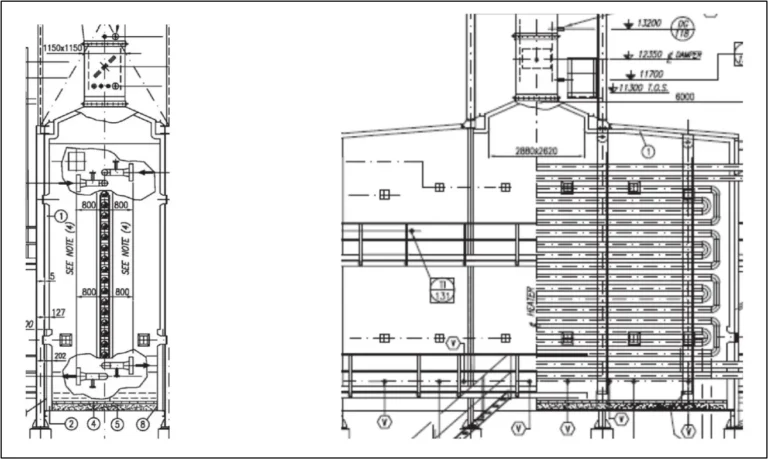Hydrocracker Efficiency Increase During Turnaround
Hydrocracker Efficiency
Hydrocrackers play a crucial role in refining by removing impurities and improving the quality of petroleum products. However, various factors can compromise their efficiency, including ageing refractory linings and suboptimal heat transfer. This is where high-emissivity ceramic coating comes into play, offering a cutting-edge solution to boost performance and increase capacity.
Hydrocracker in the Need for Enhancing Radiant Efficiency
In 2022, a refinery tackled a unique challenge during a turnaround project: enhancing the efficiency of a hydrocracker with a distinctive convection section configuration. Unlike typical hydrocrackers, this unit’s convection section was dedicated solely to boiler feed water heating, without any process coils. This unique setup presented an opportunity to maximize the processing efficiency in the radiant section, unhindered by potential losses in the convection section.
The Fired Heater Configuration
The hydrocracker’s fired heater featured a double-fired design with a single row of horizontal radiant tubes. Its refractory lining consisted of insulating firebrick (IFB) in the lower burner zone and ceramic fiber blanket in the upper wall and roof areas. The drawing below provides a detailed illustration of the fired heater configuration.


Embracing Heater Efficiency with Cetek Coating Technology
To optimize the radiant heat transfer efficiency from the refractory surfaces to the radiant tubes, we applied Cetek high-emissivity ceramic coatings. Over two days, the entire radiant section transformed, converting it into a near-blackbody enclosure. This cutting-edge coating technology ensures optimal radiant heat transfer, improving overall performance.
The Results: Thermal Efficiency Improvements
The implementation of high-emissivity ceramic coating technology yielded impressive results, demonstrating its effectiveness in boosting hydrotreater efficiency and capacity while reducing emissions and fuel consumption.
1. Fuel Savings: The refinery achieved a 1.9% reduction in fuel consumption, translating into significant cost savings and improved operational efficiency.
2. CO2 Emissions Reduction: Directly linked to fuel savings, the refinery experienced a 1.9% decrease in carbon dioxide (CO2) emissions, contributing to a more sustainable and environmentally friendly operation.
3. NOx Emissions Reduction: Calculations indicate a substantial 4.1% reduction in nitrogen oxide (NOx) emissions, further enhancing the refinery’s commitment to minimizing its environmental impact.
The results can be seen in the following Table 1:
Free consultation with an IGS Subject Matter Expert
IGS is here to provide information, answer questions and create an effective solution for your needs.


